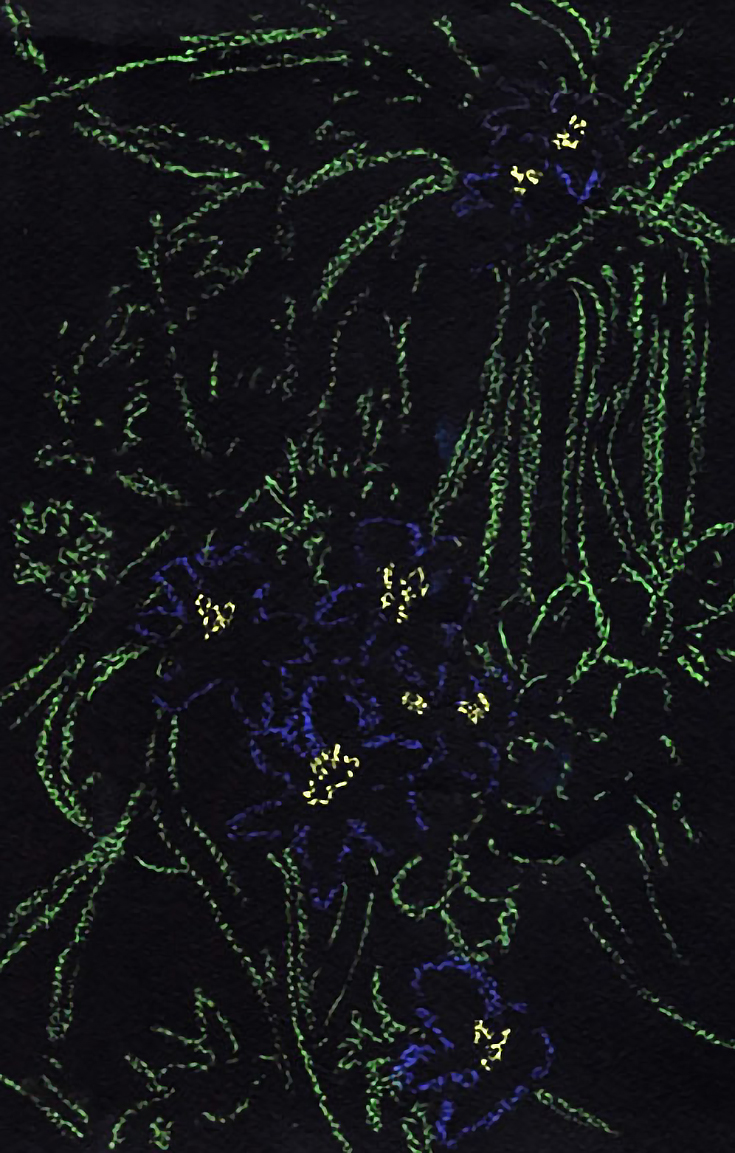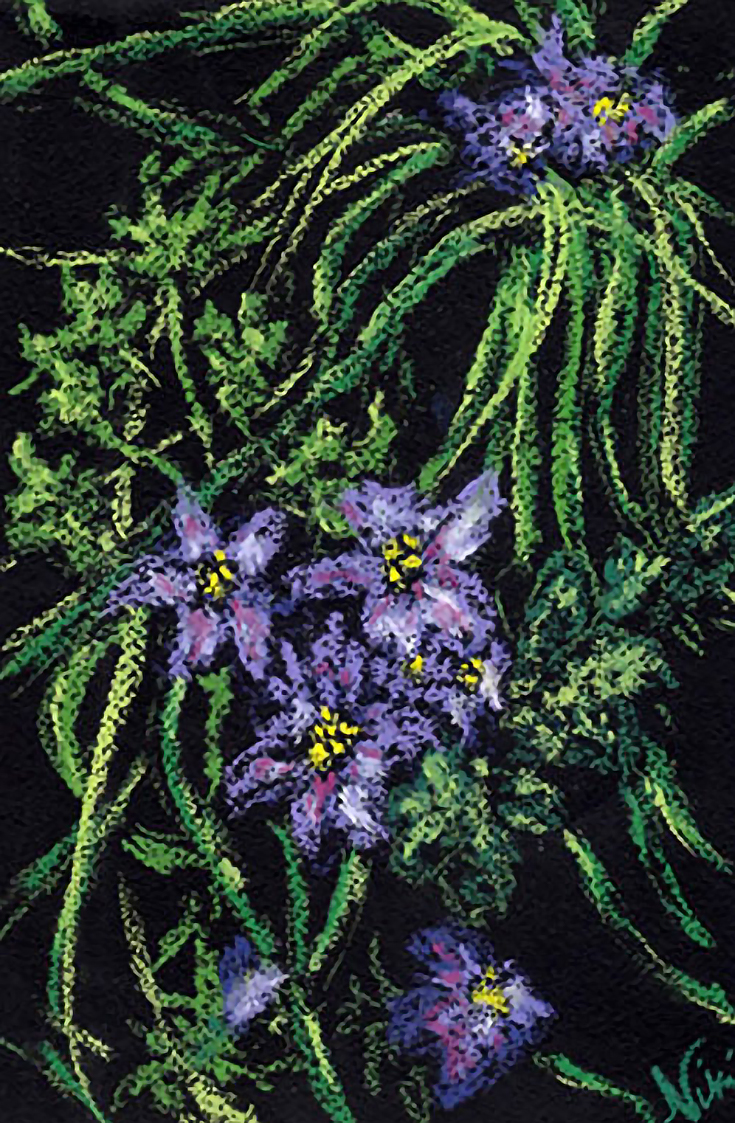One of the joys of using the soft pastel medium is its versatility. I particularly like painting with my pastels on dark surfaces, rather than on traditional white surfaces, because of how well the colors stand out.
Though it may be a bit more challenging at first, using black pastel paper as a surface for your next painting can be a fun way to maximize those bright colors of your soft pastels.
Here’s a quick demonstration with some of the tips I’ve learned along the way:
Tip #1 – Plan ahead
A little extra planning will serve you well when using black paper as a surface. Choose a subject that has strong contrast, and keep your color scheme simple. Before diving in, you might also want to use thumbnail sketches (also on dark paper) to help you plan your composition.
Once you’re ready to get started, select dark colors for your initial sketch that will blend in with your color scheme later. Draw your basic shapes, leaving any areas of deep shadow untouched. Those sections can make use of the black paper the most.
For this sketch, I just used the purples and greens I knew I’d be using later. Stay away from bright or light colors in this stage, unless you’re adding a few points of emphasis to help you better visualize your composition.
Tip #2 – Add more layers, without smearing
Begin working in your middle values. When working with black paper, every stroke counts! It’s better to use restraint as you work—you can always go back and add a few strokes I at the end if needed.
Continue to leave black paper visible anywhere there are shadows. Resist the urge to smear—pastel doesn’t smear well on black paper. If you do end up smearing some pastel, be sure to carefully do the same to a few other areas as well, so that the smeared effect is consistent.
Tip #3 – Watch out for light pastel dust
Pastel dust will stick to the black paper and affect the contrast the black paper provides. If you do end up with dusty black paper that doesn’t look as dark as you’d like, you can go over it a bit with a little black pastel to bring back the contrast (again, make sure it’s consistent throughout the piece).
Tip #4 – Use fixative before final highlights
Finish up by bringing out those highlights and punches of bright color. Select a few areas you’d like to emphasize, and add final details to maximize your contrast.
If you’re a fixative user, a light spray at the end will keep your pastel dust from traveling to the unpainted parts of the black paper. Remember that fixative darkens colors, however, so you may want to do a final refresh of a few of the brighter colors after the fixative dries.
I hope these tips have helped! Happy pastel painting!
This post may contain affiliate links.



